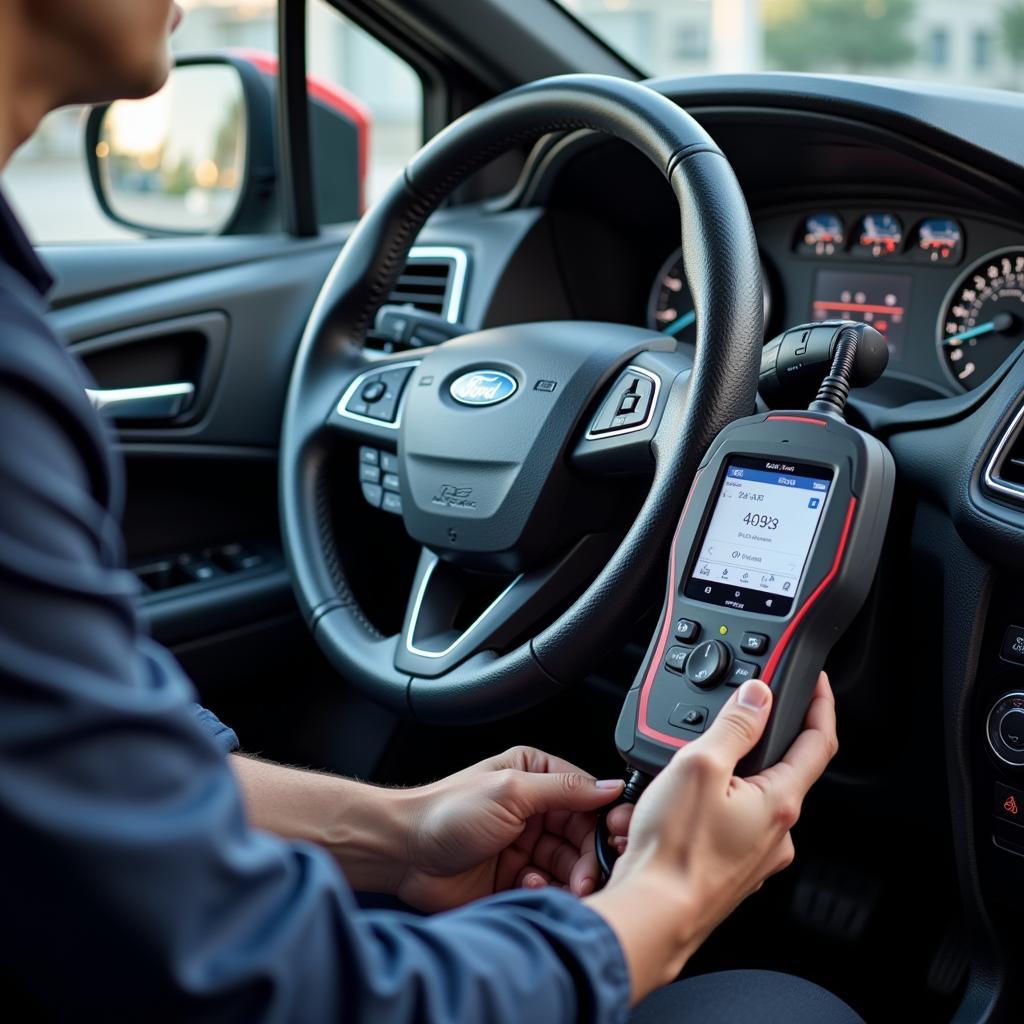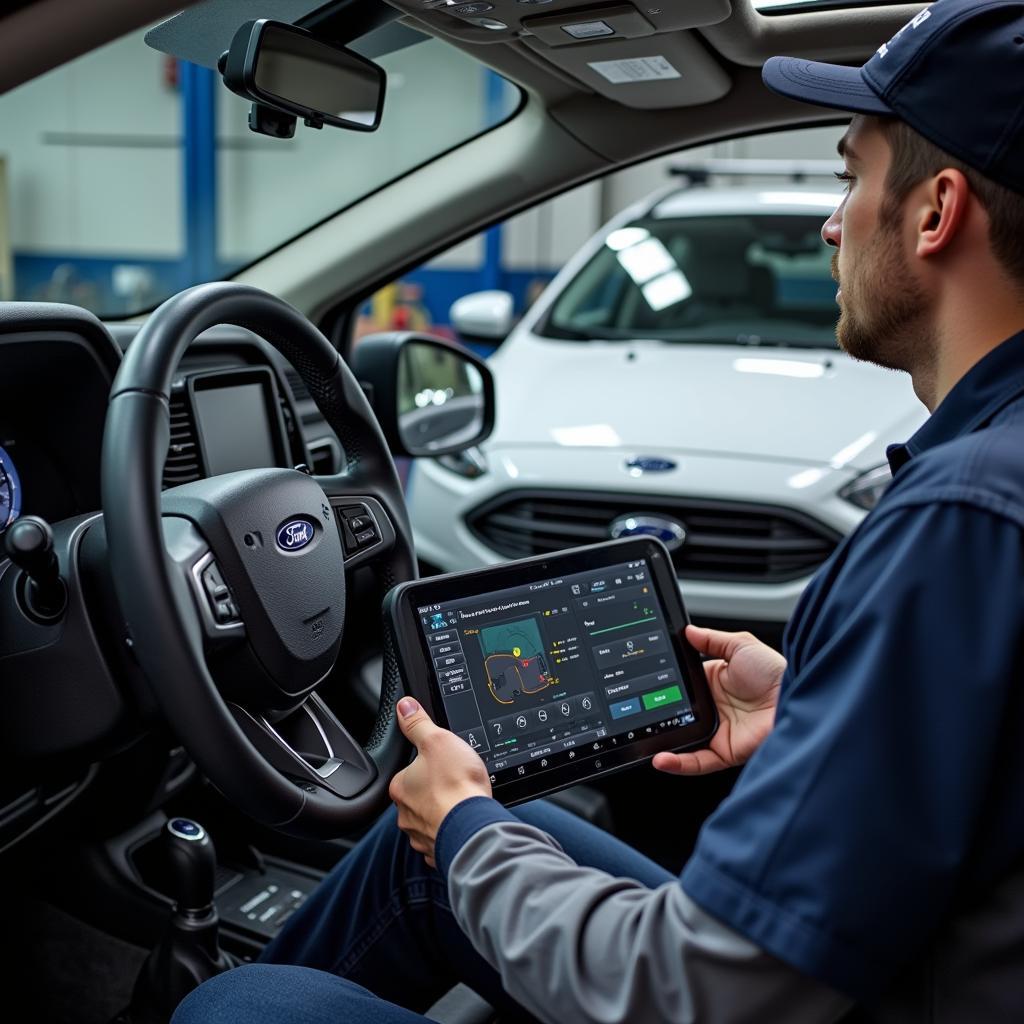The Ford forward collision warning with brake support system is a crucial safety feature designed to prevent or mitigate the severity of frontal collisions. However, like any complex technology, it can sometimes malfunction, causing frustration and concern. This comprehensive guide will delve into the common causes of issues with Ford’s forward collision warning with brake support, offer troubleshooting tips, and explore solutions to get your system back on track.
Understanding Ford’s Forward Collision Warning with Brake Support System
This system uses radar and camera technology to monitor the distance between your vehicle and the one ahead. If it detects an impending collision, it provides visual and audible warnings. If the driver doesn’t react, the system can pre-charge the brakes and even apply them automatically to reduce the impact. A malfunctioning system can trigger false alarms, fail to provide warnings when needed, or even engage the brakes unnecessarily.
Common Causes of Forward Collision Warning Malfunctions
Several factors can contribute to issues with the forward collision warning with brake support system. These include:
- Obstructed Sensors: Dirt, snow, ice, or even bugs can obstruct the radar and camera sensors, hindering their ability to accurately detect objects.
- Misaligned Sensors: A slight misalignment of the sensors, often due to a minor collision or bumper repair, can significantly impact their performance.
- Software Glitches: Like any computer-based system, the forward collision warning system can experience software glitches that require updates or resets.
- Faulty Wiring or Components: Damaged wiring or a malfunctioning component within the system can disrupt its operation.
- Low Battery Voltage: A weak battery can sometimes interfere with the proper functioning of electronic systems in your vehicle, including the forward collision warning system.
Troubleshooting Ford’s Forward Collision Warning with Brake Support
Before rushing to the dealership, you can try some simple troubleshooting steps:
- Clean the Sensors: Carefully clean the front grille and sensor area with a soft cloth and mild detergent. Ensure the sensors are free of any obstructions.
- Check Your Surroundings: Ensure there are no objects near your vehicle that might be triggering false alarms, such as parked cars or overhanging branches.
- Restart Your Vehicle: A simple restart can sometimes resolve temporary software glitches.
- Check Your Battery: Ensure your battery is in good condition and providing sufficient voltage.
When to Seek Professional Help
If the issue persists after trying these steps, it’s best to consult a qualified technician. They have the specialized diagnostic tools and expertise to pinpoint the problem and perform the necessary repairs.
 Ford Forward Collision Warning System Diagnostic Tool
Ford Forward Collision Warning System Diagnostic Tool
Solutions for Forward Collision Warning Issues
Depending on the diagnosed problem, the solution may involve:
- Sensor Cleaning/Calibration: Professional cleaning and calibration can ensure optimal sensor performance.
- Software Updates: Updating the system’s software can address known bugs and improve its functionality.
- Component Replacement: If a faulty component is identified, replacement will be necessary to restore proper operation.
- Wiring Repair: Damaged wiring will need to be repaired or replaced.
“Regular maintenance and prompt attention to warning signs can help prevent costly repairs and ensure the continued effectiveness of this vital safety feature,” says John Miller, Senior Automotive Diagnostic Technician at Miller’s Auto Repair.
 Ford Forward Collision Warning System Sensor Calibration
Ford Forward Collision Warning System Sensor Calibration
Conclusion
Ford’s forward collision warning with brake support system is a valuable safety asset. Understanding its operation, common issues, and troubleshooting steps empowers you to maintain its effectiveness. If problems persist, seeking professional help is essential. Regular maintenance and addressing issues promptly can prevent costly repairs and ensure your safety on the road.
“Don’t ignore persistent warnings or malfunctions. Addressing them promptly ensures the system’s reliability and your safety,” adds Sarah Johnson, Lead Automotive Software Engineer at Johnson Automotive Solutions.
FAQ
- What does the forward collision warning light mean? A solid light usually indicates a system malfunction. A flashing light often accompanies an audible warning, indicating an impending collision.
- Can I disable the forward collision warning system? Yes, usually through the vehicle’s infotainment system. However, disabling safety features is generally discouraged.
- How much does it cost to repair the forward collision warning system? The cost varies depending on the specific issue and required repairs.
- How often should I have the forward collision warning system checked? It’s recommended to have it checked during regular vehicle maintenance.
- Can weather conditions affect the system’s performance? Yes, heavy rain, snow, or fog can sometimes interfere with sensor operation.
- What should I do if the system engages the brakes unnecessarily? Pull over safely and consult a qualified technician.
- Is the forward collision warning with brake support the same as automatic emergency braking? While related, they are not the same. The forward collision warning alerts the driver, while automatic emergency braking can apply the brakes automatically.

